Tom's Hardware Verdict
The EVGA SuperNOVA 1000 G7 is among the best PSUs in this Wattage category and, without any doubt, the smallest one in dimensions.
Pros
- +
Full power at 47 degrees Celsius
- +
High overall performance
- +
Good build quality
- +
Properly set protection features
- +
Efficient
- +
Efficient enough 5VSB rail
- +
Tight load regulation
- +
Good transient response
- +
Satisfactory ripple suppression
- +
Compact dimensions
- +
Fully modular
- +
Loads of connectors
- +
Compatible with the alternative sleep mode
- +
Compact dimensions
- +
PSU load indicators
- +
10-year warranty
Cons
- -
No PCIe 5.0 connectors
- -
High inrush currents
- -
Small distance between the peripheral connectors
Why you can trust Tom's Hardware
The EVGA SuperNOVA 1000 G7 is a high-performance power supply, challenging some of the highest capacity models on our best PSUs,list. FSP delivered an excellent platform to EVGA with tiny dimensions and high build quality. The strongest competitor is the Corsair RM1000x (2021), which delivers the same performance levels with notably lower noise output.
After numerous EVGA G series revisions, we have reached G7, with FSP providing the platforms. The G7 units come in four flavors, ranging from 650 W to 1,000 W. All have super compact dimensions, with only 130mm depth, the same as the SFX-L form factor. The dimensions of the 1000 G7 unit, which I will evaluate in this review, are 150 (W) x 85 (H) x 130 mm (L). In comparison the SilverStone SX1000 SFX-L measures 125 x 65 x 130 mm. This makes the 1000 G7 the smallest 1,000 W ATX PSU available on the market. One might wonder why vendors keep making smaller power supplies when very specific standards define the dimensions, but as long as it doesn't affect noise output and performance, I don't mind.
There was no room for a larger fan, so FSP had to install 120 mm fans. Thanks to their fluid dynamic bearings, they shouldn't have a problem with the prolonged, 10-year warranty. EVGA was among the first to offer such long warranty periods, along with Corsair and Seasonic.



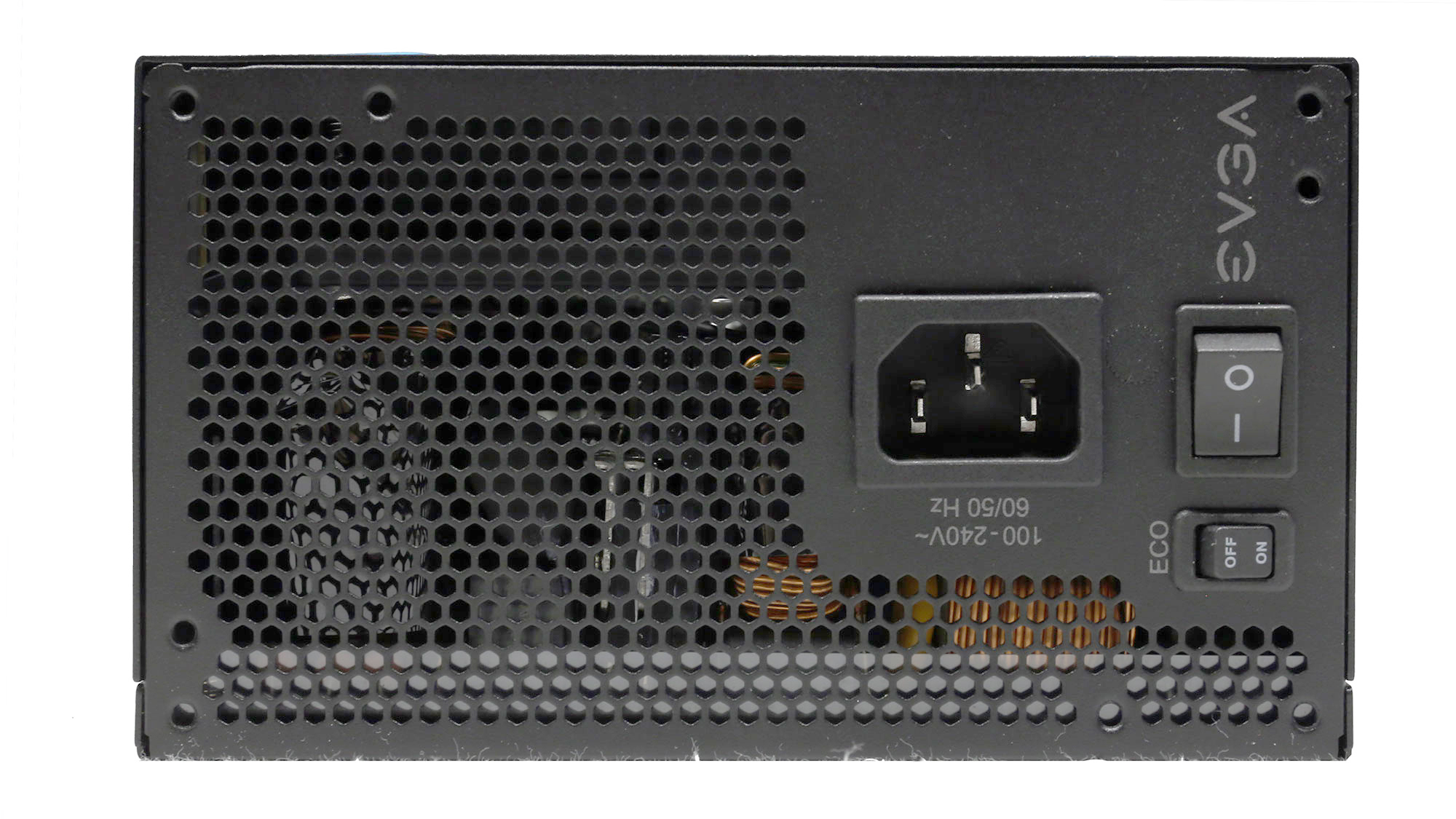



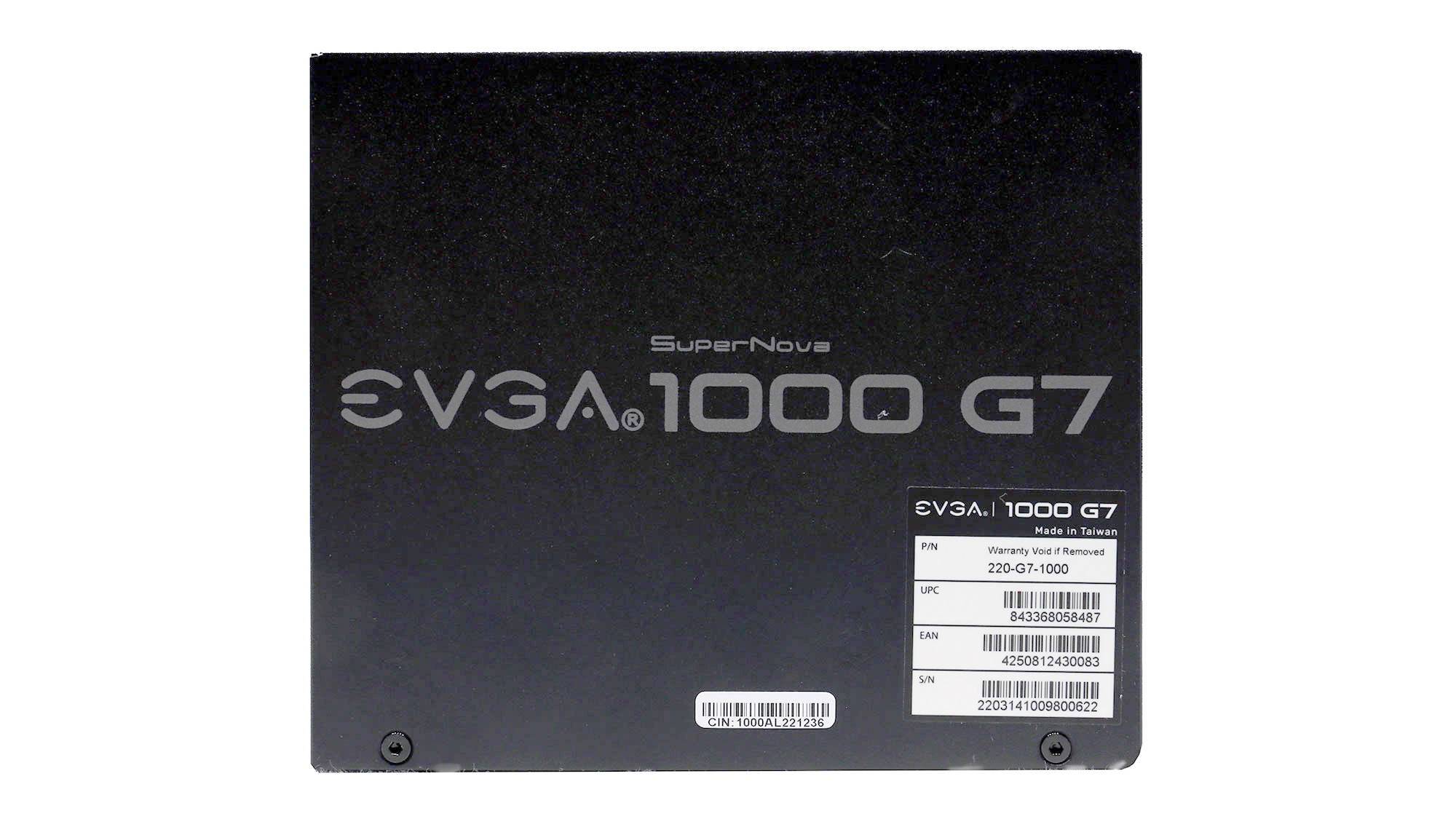





The product's box is small, although it contains a powerful 1,000 W PSU. The protection inside is good, with foam spacers covering the PSU's edges.








Once you take the PSU out of the box, you will also notice some LED indicators, which depict the load level of the PSU.

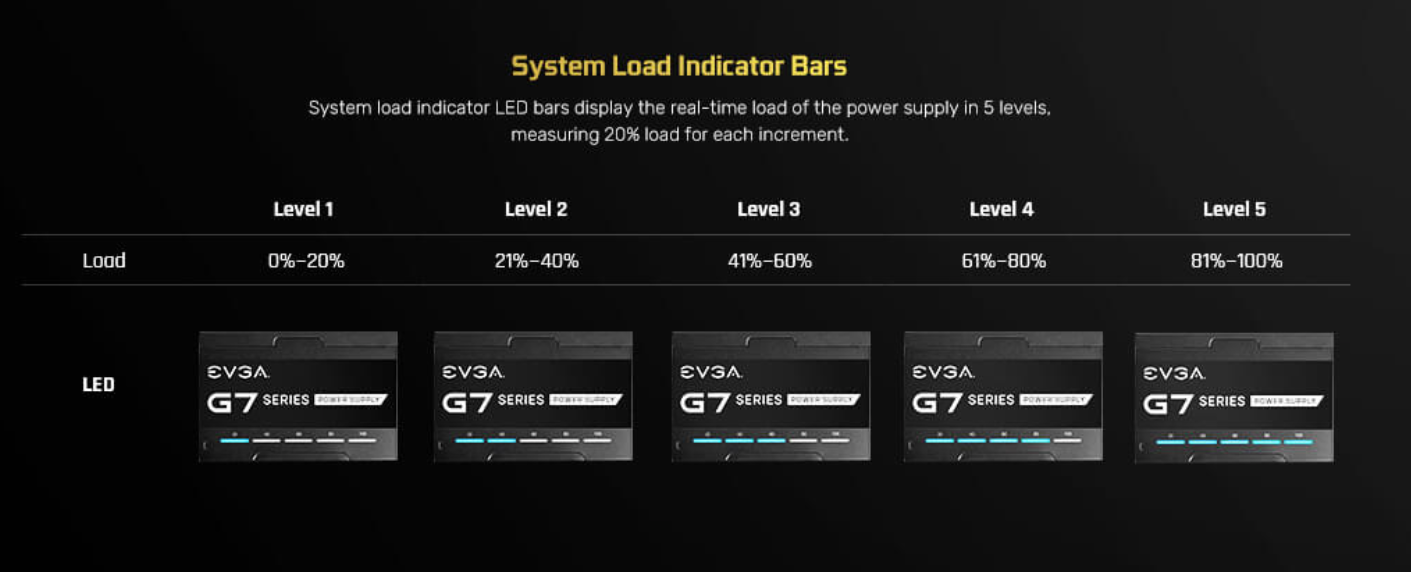
Specifications
| Manufacturer (OEM) | FSP |
| Max. DC Output | 1,000 W |
| Efficiency | 80 PLUS Gold, Cybenetics Platinum (89-91%) |
| Noise | Cybenetics Standard++ (30-35 dB[A]) |
| Modular | ✓(Fully) |
| Intel C6/C7 Power State Support | ✓ |
| Operating Temperature (Continuous Full Load) | 0 - 50°C |
| Over Voltage Protection | ✓ |
| Under Voltage Protection | ✓ |
| Over Power Protection | ✓ |
| Over Current (+12V) Protection | ✓ |
| Over Temperature Protection | ✓ |
| Short Circuit Protection | ✓ |
| Surge Protection | ✓ |
| Inrush Current Protection | ✓ |
| Fan Failure Protection | ✗ |
| No Load Operation | ✓ |
| Cooling | 120mm Fluid Dynamic Bearing Fan (MGA12012XF-O25) |
| Semi-Passive Operation | ✓(selectable) |
| Dimensions (W x H x D) | 150 x 85 x 130mm |
| Weight | 1.72 kg (3.79 lb) |
| Form Factor | ATX12V v2.52, EPS 2.92 |
| Warranty | 10 Years |
Power Specifications
| Rail | Row 0 - Cell 1 | 3.3V | 5V | 12V | 5VSB | -12V |
| Max. Power | Amps | 24 | 24 | 83.3 | 3 | 0.5 |
| Row 2 - Cell 0 | Watts | Row 2 - Cell 2 | 120 | 1000 | 15 | 6 |
| Total Max. Power (W) | Row 3 - Cell 1 | Row 3 - Cell 2 | 1000 | Row 3 - Cell 4 | Row 3 - Cell 5 | Row 3 - Cell 6 |
Cables and Connectors
| Description | Cable Count | Connector Count (Total) | Gauge | In Cable Capacitors |
|---|---|---|---|---|
| ATX connector 20+4 pin (600mm) | 1 | 1 | 18-22AWG | Yes |
| 4+4 pin EPS12V (700mm) | 2 | 2 | 18AWG | No |
| 6+2 pin PCIe (700mm+150mm) | 3 | 6 | 18AWG | No |
| 6+2 pin PCIe (700mm) | 2 | 2 | 18AWG | No |
| SATA (550mm+100mm+100mm) | 4 | 12 | 18AWG | No |
| 4-pin Molex (550mm+100mm+100mm+100mm) | 1 | 4 | 18AWG | No |
| FDD Adapter (100mm) | 1 | 1 | 22AWG | No |
| AC Power Cord (1390mm) - C13 coupler | 1 | 1 | 16AWG | - |
Plenty of long cables and connectors are provided, including two EPS and eight PCIe connectors. You won't find any of the new 12+4 pin PCIe connectors, though, since this PSU is not ATX 3.0 or PCIe 5.0 ready. Moreover, I would like to see a longer distance between the peripheral connectors.







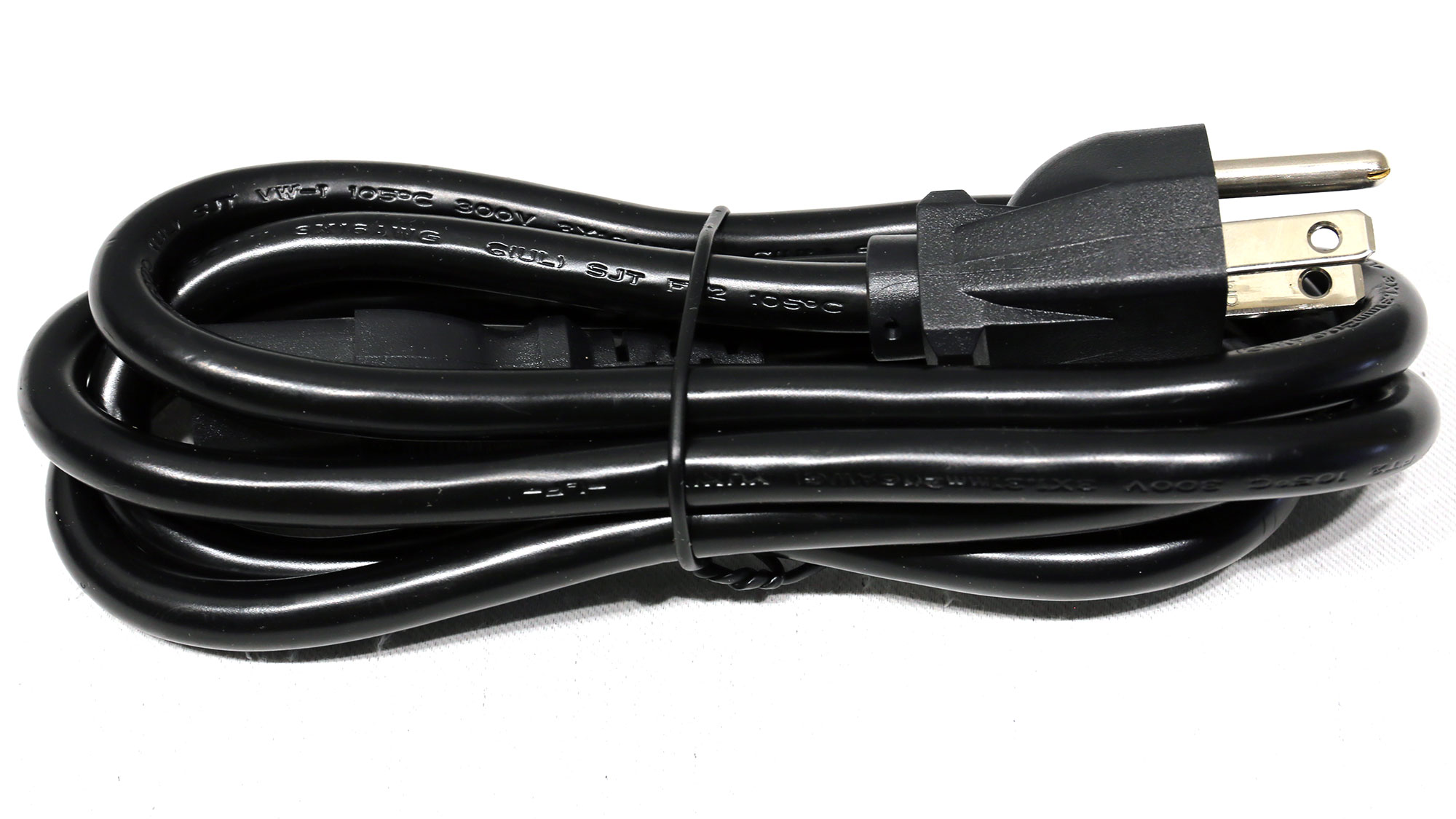

Only the ATX connector has extra caps, which are for better ripple filtering.
Get Tom's Hardware's best news and in-depth reviews, straight to your inbox.
Component Analysis
We strongly encourage you to have a look at our PSUs 101 article, which provides valuable information about PSUs and their operation, allowing you to better understand the components we're about to discuss.
| General Data | - |
| Manufacturer (OEM) | FSP |
| PCB Type | Double Sided |
| Primary Side | - |
| Transient Filter | 4x Y caps, 2x X caps, 2x CM chokes, 1x MOV |
| Inrush Protection | NTC Thermistor SCK-056 (5 Ohm) & Relay |
| Bridge Rectifier(s) | 2x |
| APFC MOSFETs | 3x |
| APFC Boost Diode | 1x |
| Bulk Cap(s) | 2x Nippon Chemi-Con (420V, 470uF each or 940uF combined, 2,000h @ 105°C, KHE) |
| Main Switchers | 2x Infineon IPP60R120P7 (600V, 16A @ 100°C, Rds(on): 0.12Ohm) |
|
IC Driver |
1x Novosense NSi6602 |
| APFC Controller | Infineon ICE2PCS02 |
| Resonant Controller | Champion CM6901T2X |
| Topology |
Primary side: APFC, Half-Bridge & LLC converter Secondary side: Synchronous Rectification & DC-DC converters |
| Secondary Side | - |
| +12V MOSFETs | no info |
| 5V & 3.3V | DC-DC Converters: 6x Infineon BSC0901NS (30V, 94A @ 100°C, Rds(on): 1.9mOhm) PWM Controller(s): ANPEC APW7159C |
| Filtering Capacitors |
Electrolytic: 5x Rubycon (3-6,000h @ 105°C, YXG), 3x Rubycon (1-5,000h @ 105°C, ZL) |
| Supervisor IC | Weltrend WT7527RA (OCP, OVP, UVP, SCP, PG) |
| Fan Controller | Microchip PICF15324 |
| Fan Model | Protechnic Electric MGA12012XF-O25 (120mm, 12V, 0.52A, Fluid Dynamic Bearing Fan) |
| 5VSB Circuit | - |
| Rectifier | 1x NIKO-SEM P1006BD (60V, 42A @ 100°C, Rds(on): 10mOhm) FET |
| Standby PWM Controller | Power Integrations INN2603K |




FSP makes this tiny platform. As expected, because of the high capacity, it is overpopulated, and identifying all parts without possibly destroying the PSU was pretty hard. Such PCBs always give us trouble during the part analysis process.
The design is modern with a half-bridge topology and an LLC resonant converter on the primary side. We also find a synchronous rectification scheme on the secondary side for the 12V rail and DC-DC converters for the minor rails.


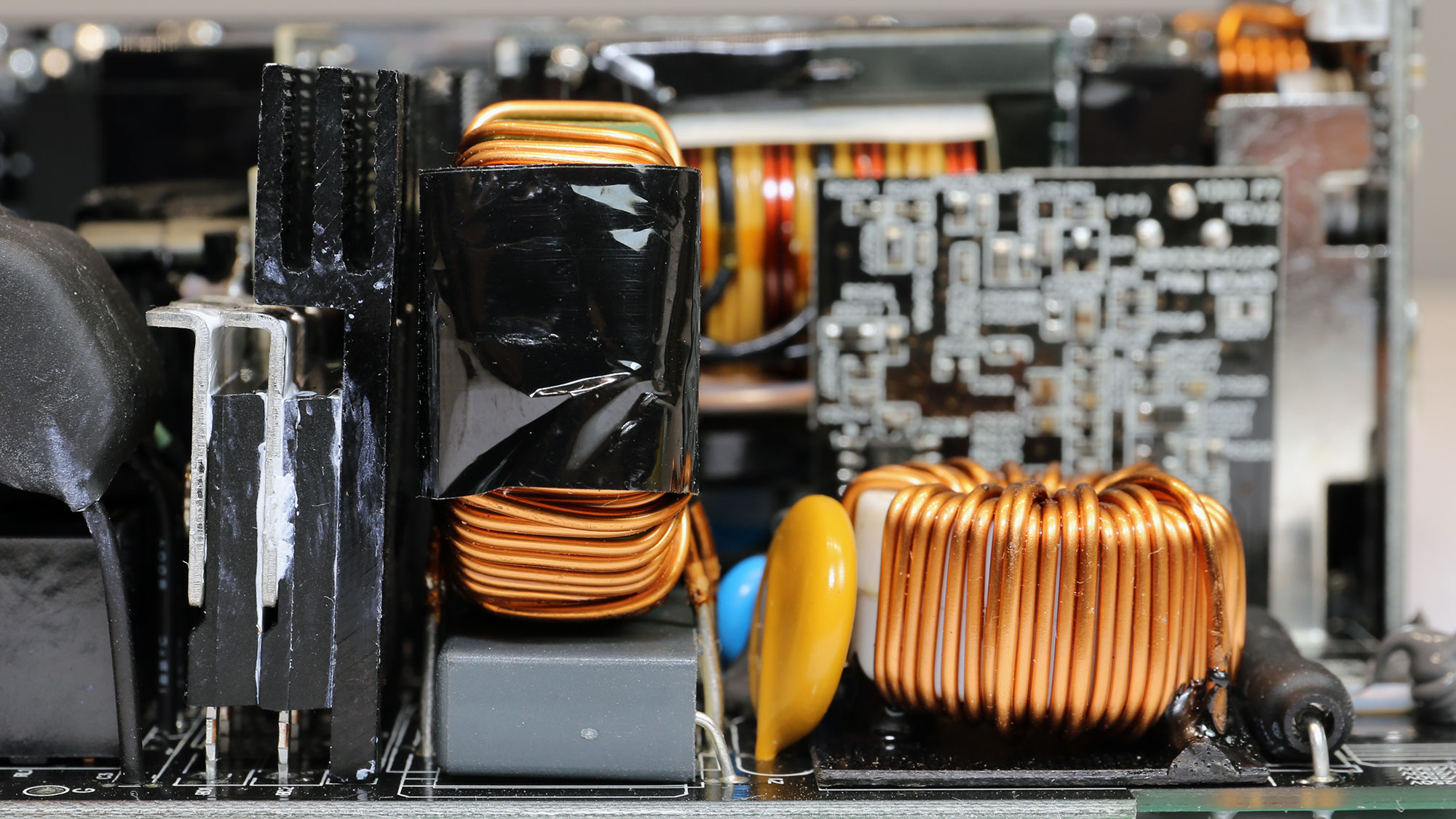



The transient/EMI filter has all the necessary parts, so I expect low EMI emissions. Moreover, it is equipped with an MOV, which handles voltage surges coming from the mains grid, and I also found an NTC thermistor and relay combo for suppressing high inrush currents.

The pair of bridge rectifiers is sandwiched between two heat sinks.




The APFC converter uses three FETs and a single boost diode. The PFC controller is installed on a vertical board, an Infineon ICE2PCS02. The same board also hosts an operational amplifier (op-amp).



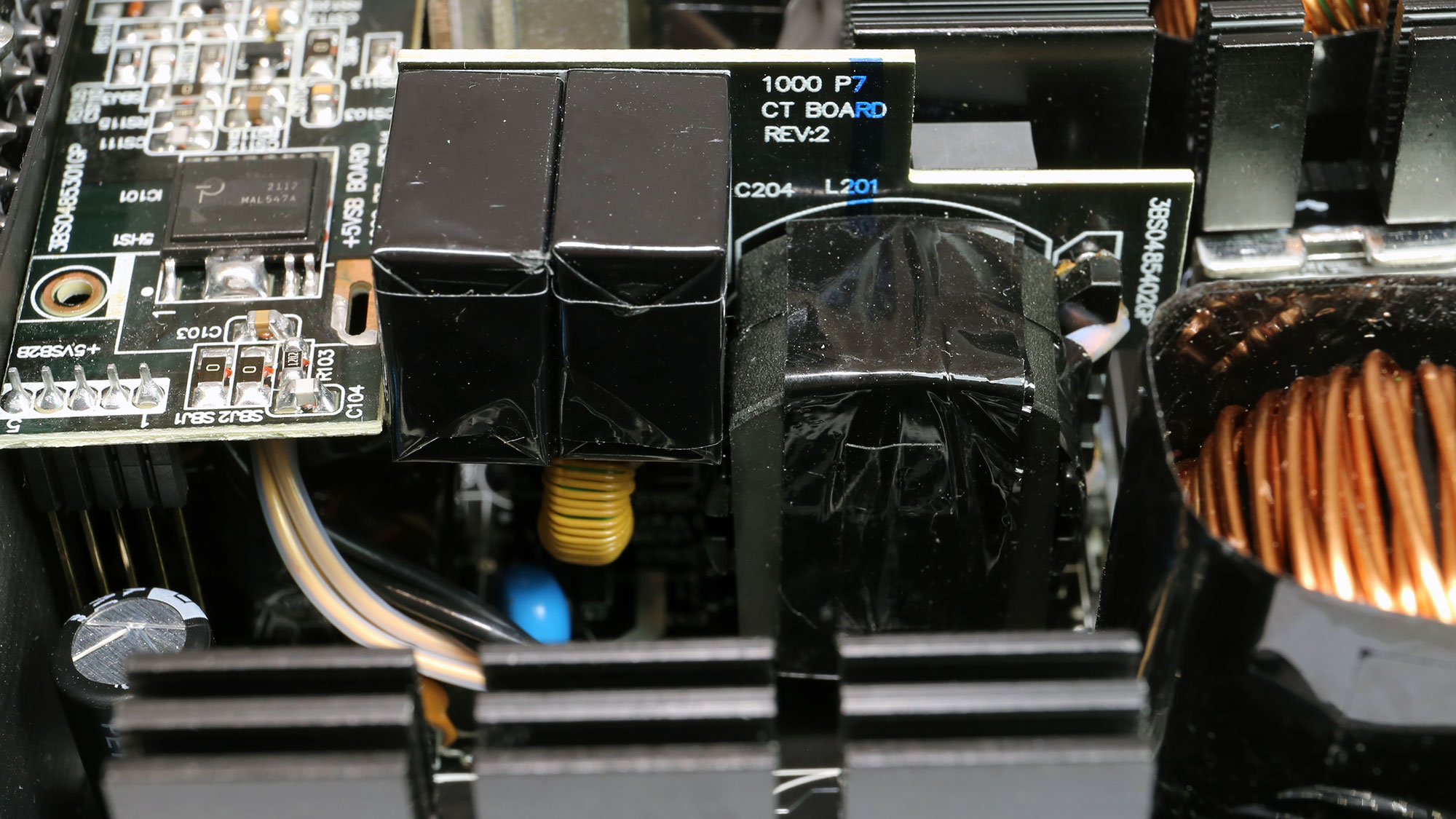
Two Infineon IPP60R120P7 are the main FETs, configured in a half-bridge topology. Their driver IC is a Novosense NSi6602, and the LLC resonant converter is the usual aspect, a Champion CM6901T2X IC. Parts of the LLC resonant converter are installed on a daughter board because there was no room on the main PCB.




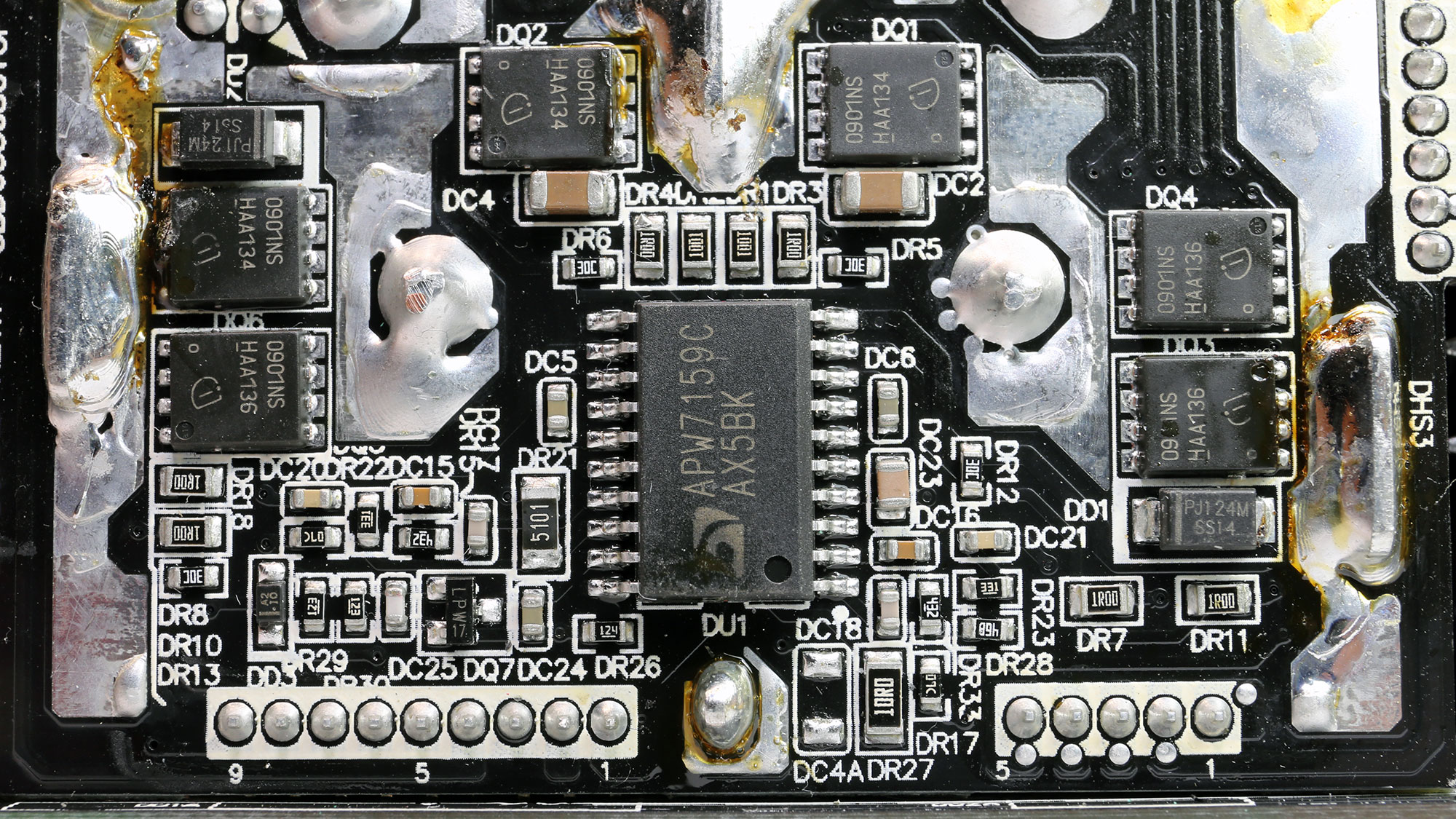
The FETs that regulate the 12V rail are installed on a board next to the main transformer to minimize energy losses. Another vertical board hosts the DC-DC converters that handle the minor rails.



The filtering caps are high quality. On the secondary side, all electrolytic caps are by Rubycon and the polymer ones by Chemi-Con and NIC.



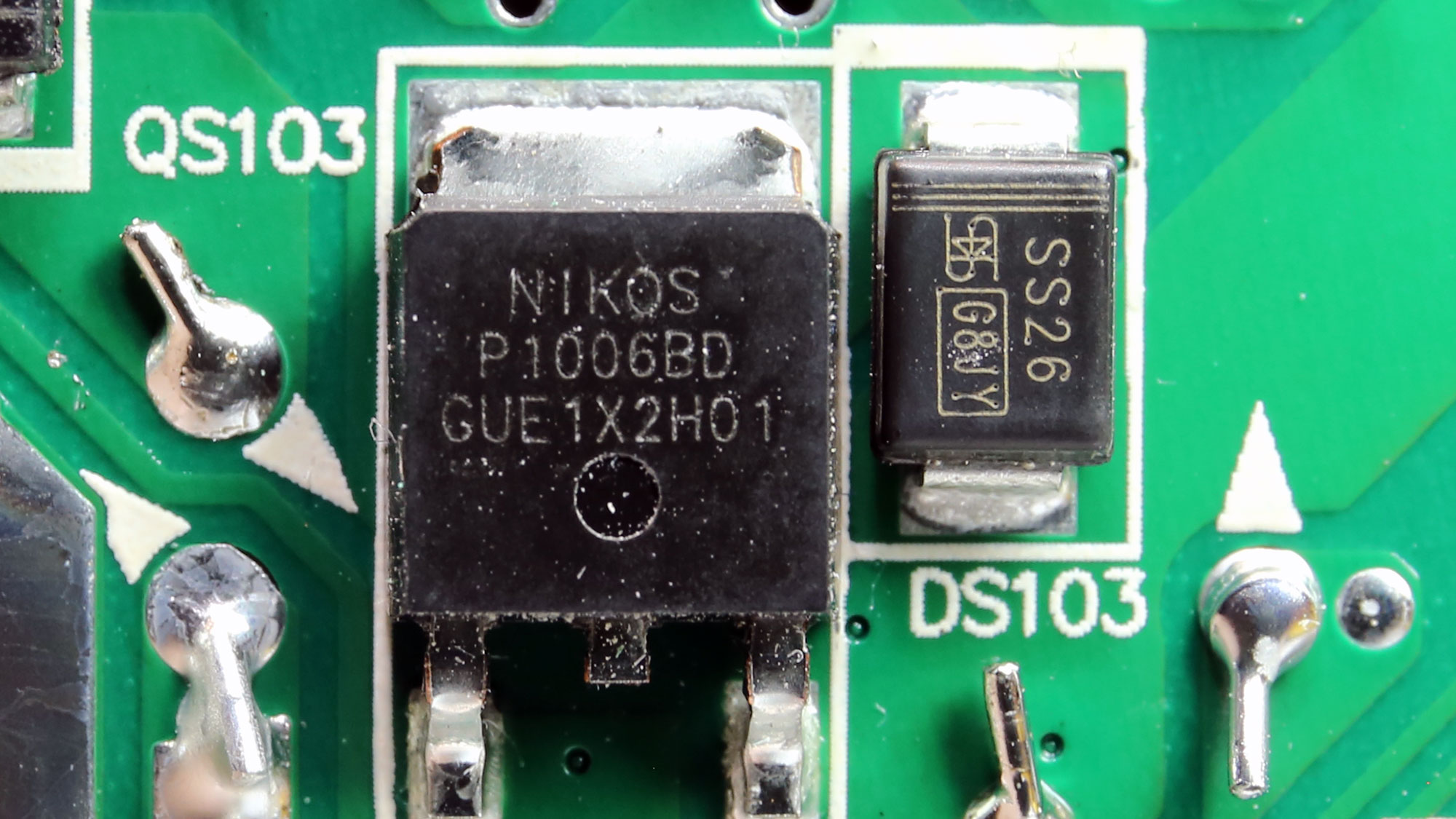
The standby PWM controller is by Power Integrations, and a NIKO-SEM P1006BD FET is the rectifier on the secondary side of the 5VSB circuit.


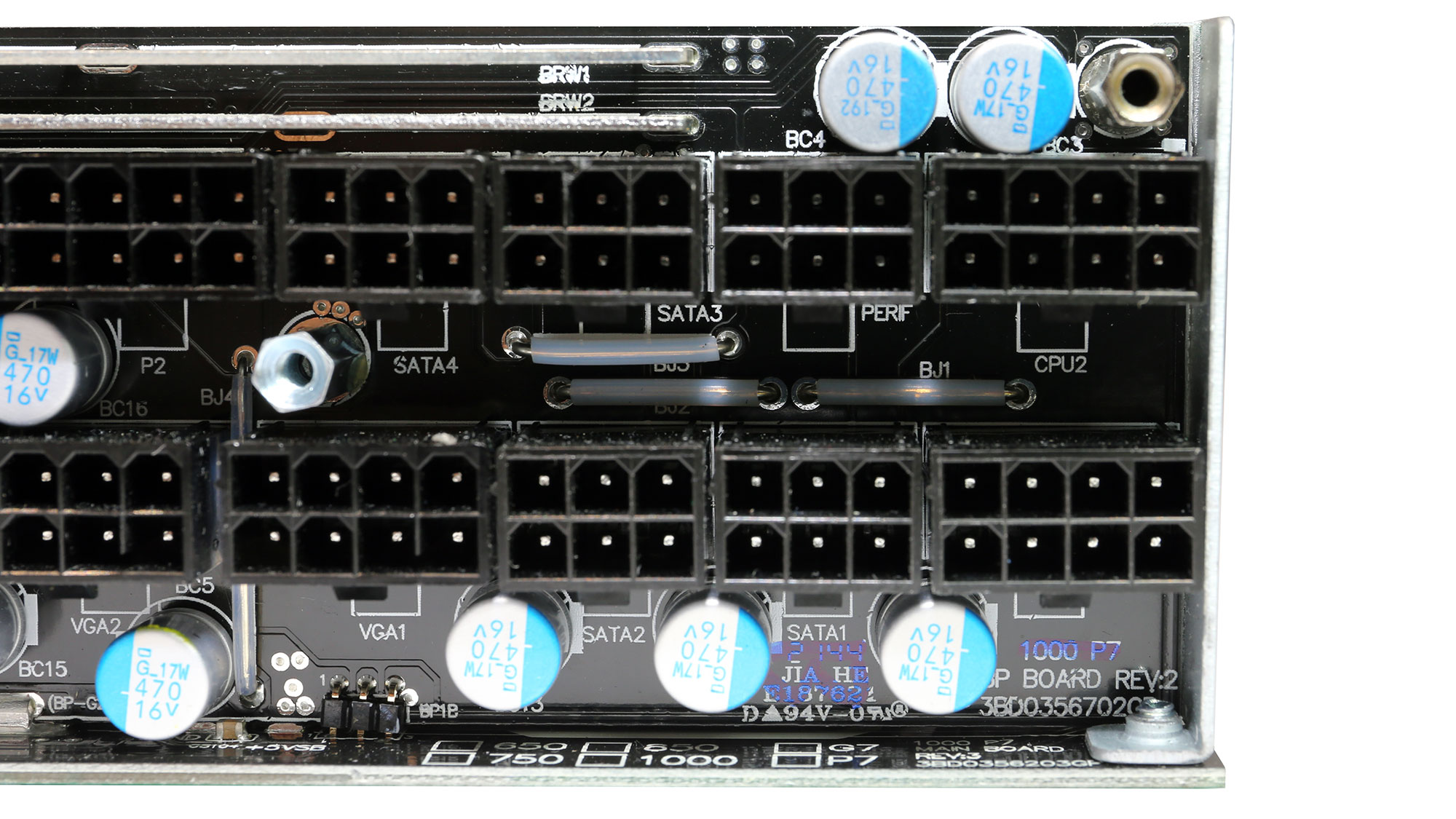
Many Chemi-Con polymer caps are installed on the modular PCB for ripple filtering purposes.

The main supervisor IC is a Weltrend WT7527RA.


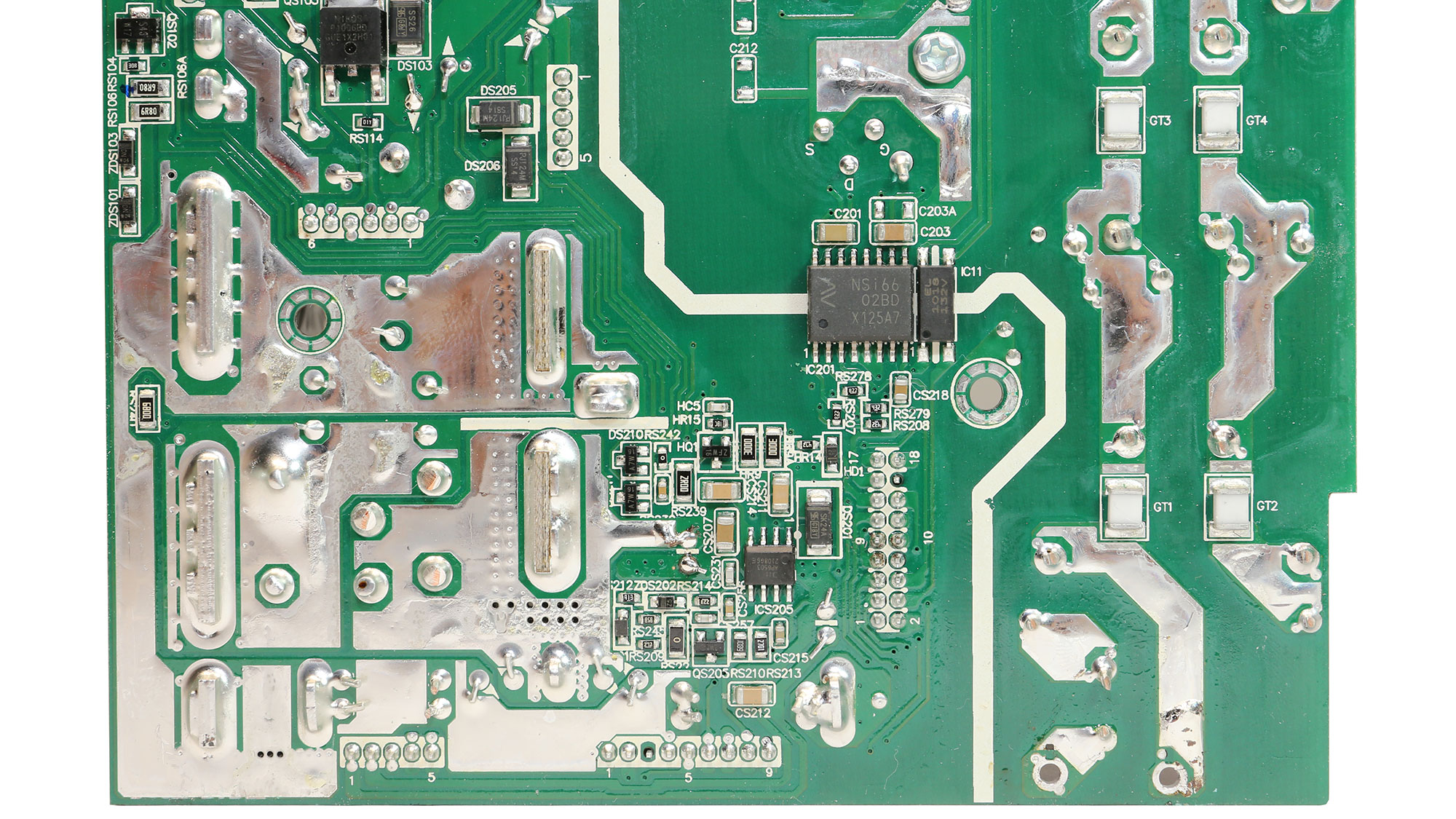
Soldering quality is good.


The fan is of high quality, and the fluid dynamic bearing will help it outlive the extended warranty if you don't have it operating under high operating temperatures all the time (> 40 degrees Celsius).
MORE: Best Power Supplies
MORE: How We Test Power Supplies
MORE: All Power Supply Content
Current page: Specifications and Part Analysis
Next Page Load Regulation, Hold-Up Time, Inrush & Leakage Current, Efficiency and Noise
Aris Mpitziopoulos is a contributing editor at Tom's Hardware, covering PSUs.
-
Co BIY Another great review.Reply
Are there cost reductions in making a physically smaller power supply ?
I hope we get to see a review of the Chieftronic Powerplay. It's putting up some interesting numbers.
